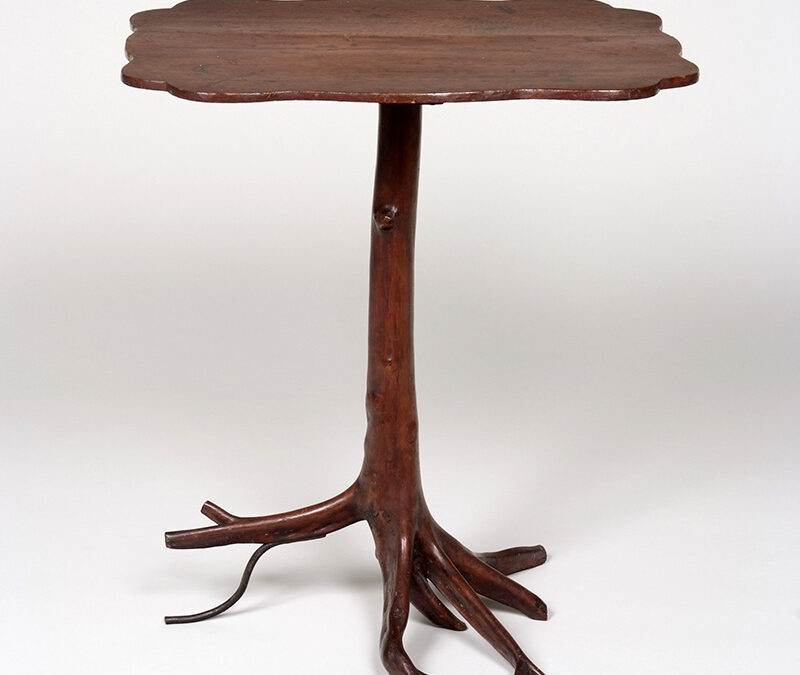Tea Table

| Maker | “Big” Tom Burton |
| Date of Creation | 1865–1900 |
| Location | Long Neck (Sussex County), Delaware |
| Materials | Walnut, swamp root, metal |
| Institution | Biggs Museum of American Art |
| Credit Line | Museum Purchase |
| Accession Number | 2009.4 |
| Photo Credit | Carson Zullinger |
“Big” Tom Burton was a slave who worked on the Burton Plantation in southern Sussex County. The planation’s owner—Benjamin Burton—was the largest slaveholder in the state. “Big” Tom Burton supposedly created this table later in life after he received his freedom. The table descended in his family until it was sold to an antiques dealer, who sold it to the museum. The table was made by repurposing the top from a pre-existing walnut tea table or candlestand from the 18th-century and joining it to another found element—a piece of swamp root. The swamp root base is burnished and includes a metal foot on one side to ensure a level surface for the top. The use of repurposed and found materials in this table serves as a testament to the resilience, skill, and ingenuity of its maker. Delaware was one of the last states to abolish slavery and involuntary servitude. The Emancipation Proclamation applied to states engaged in rebellion against the Union and went into effect on January 1, 1863. However, President Abraham Lincoln’s order did not apply to border states—like Delaware—between the North and South. Emancipation did not occur in Delaware until December 18, 1865, with the ratification of the Thirteenth Amendment to the United States Constitution. Delaware prides itself on being “The First State” for ratifying the Constitution before any other. However, it was among the last to ratify the Thirteenth Amendment outlawing slavery, waiting until February 1901—more than 35 years after the end of the Civil War and after the amendment to the constitution had already become law. The last complete census in 1860 found 1,900 people living in slavery in Delaware. Most of those were in Sussex County, although smaller numbers were held throughout the state.

